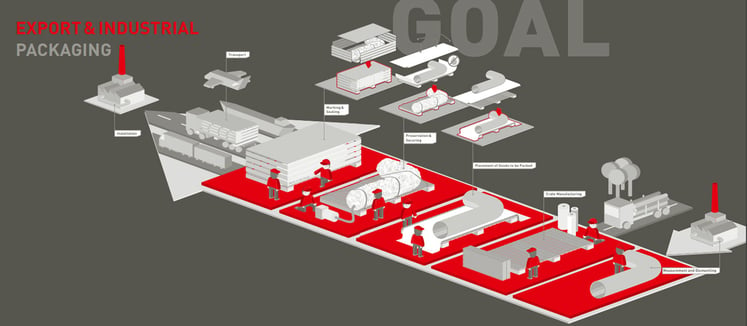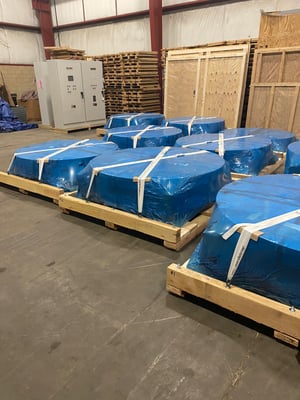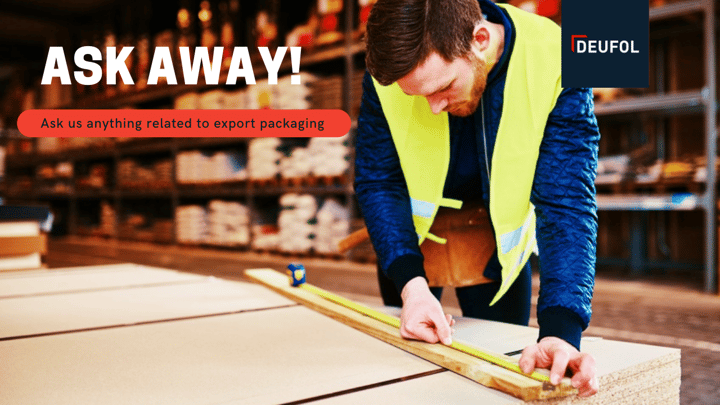The current situation is tough for builders, manufacturers, and anyone who needs to purchase raw materials. Lumber prices are up over 300% in the past year. While there has been a slight pullback since May, the futures contracts price per thousand feet of two-by-fours is still more than three times pre-pandemic levels.
The pricing surge isn’t specific to lumber. Steel prices are also up more than 300%, and the prices for foil, fasteners, and other materials have also surged. While there has been some stabilization in recent months, a price drop doesn’t appear to be coming anytime soon.
Given the dramatic increase in material prices, it’s understandable that you may be looking for other areas to cut costs. One of those areas could be crating and wood packaging. After all, how hard is it to build a crate yourself? If you bring packaging in-house, you could eliminate the cost of hiring someone to do it. That could soften the blow of rising material costs. That thought process is understandable. When costs are skyrocketing, it’s natural to look for places to save money.
But cutting corners on wood packaging could result in damage and delays. In fact, a DIY approach could end up costing you much more than a partnership with a packaging provider. Below are a few of risks you may face if you eliminate your packaging partner.

A DIY approach could end up costing you much more than a partnership with a packaging provider.
Packaging and Shipping Large Items

The risks compound for a DIY packaging process when the packaging is for a large or valuable item. The wooden crate is only one part of the process. When you work with a packaging consultant, you benefit from their strategic planning. With a DIY approach, you lose that strategy and experience.
For example, a packaging partner may decide to use a different material for the crate other than wood to better protect against environmental or climate risks. They may know from experience that your large item should be disassembled and shipped rather than shipped in one crate. They may use advanced GPS technology to track not only the crate’s location in transit, but also its movement, temperature, exposure to moisture and more.
Dunnage: What’s in the crate?
The other big consideration with a DIY packaging process is something called “dunnage.” That’s the material that goes inside the crate to hold the item in place during transit. Think about Styrofoam or packing peanuts. Those are examples of dunnage in its simplest form.
The larger and more valuable your item is, the more advanced your dunnage will likely need to be. A packaging consultant could use plastic molds around the item to eliminate empty space and reduce movement during transit. Or they could actually build braces and arms in the crate to hold the item in place. The item becomes attached to the crate. In a sense, the crate is an extension of the item itself. Again, this is the level of planning and insight you get with a packaging consultant, but you may miss it with a DIY process.
Military Spec Packaging Challenges
If you are a military supplier, a DIY packaging approach could create serious complications and challenges. As you know, the military will not accept just any packaging. Crates and packages must be built from certified packaging materials. Depending on your contract, you may be required to provide reusable packaging. And of course, your documentation has to be correct.
Military spec packaging is a complex and highly specific area of expertise. Bringing a military packaging process in-house would be a major undertaking, especially if you don’t have the internal experience needed to make it acceptable. It could result in your packages being rejected, which will delay delivery of your item and ultimately delay your payment. The delay in cash flow could be significantly more costly than the expense of keeping your packaging process with an experienced global industrial packaging house.
There’s no doubt that material prices are a serious issue for manufacturers right now. But turning to DIY projects may not be the right solution. An experienced packaging consultant can offer other options to reduce costs, like different materials or alternative packaging designs. Before you bring your packaging and shipping operation in-house, connect with a packaging consultant to explore other possibilities. ![]()





Let Us Know What You Thought about this Post.
Put your Comment Below.